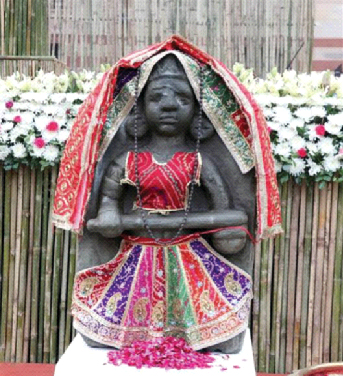As a follow-up to Prime Minister Modi’s visit to the United States in June 2023, the repatriation ceremony of handing over 105 antiquities belonging to Bharat took place at the Indian consulate in New York. This historic event was happening after India and the US agreed to work on a Cultural Property Agreement that would help prevent the illegal trafficking of cultural artefacts. Some of these antiquities include a 12-13th century marble arch from Rajasthan, a 14-15th century Apsara from Central India, a 14-15th century Sambandar from South India and a 17-18th century bronze Nataraja, also from South India. Indian Ambassador to US Taranjit Singh Sandhu while speaking on the occasion, thanked the US side. He further noted that for the people of India, these were not just pieces of art but part of their living heritage and culture.

This was not the first occasion to happen. In recent times from Canada, Australia and many European countries, Government of India has taken special efforts to bring back the Murtis and other antiquities. As Union Culture Minister G Kishan Reddy in a written response to a query in the Rajya Sabha said, “A total of 324 antiquities have been brought back to India during 2003-2023. Out of these, 291 antiquities have been retrieved since 2020”. In recent years, there has been close cooperation between India and the US on the restitution of antiquities. During PM’s 2016 visit to the US, 16 antiques were handed over by the US side. Similarly, in 2021, the US government handed over 157 artefacts which returned to India following the visit of the PM to the US in September 2021. A stone sculpture of Nagaraja (the serpent king) was retrieved from Australia in 2020.
Significance of artefacts for India
The 105 artefacts brought back from the US represent a wide geographical spread in terms of their origin in India, with 47 from Eastern India, 27 from Southern India, 22 from Central India, six from Northern India and three from Western India. The artefacts which span from 2nd-3rd century CE to 18th-19th century CE, are made of terracotta, stone, metal and wood. Around 50 artefacts relate to religious importance [Hinduism, Jainism and Islam] and the rest of them are of cultural significance. Earlier, one of such important murty that was retrieved from Canada was that of Mata Annapurna, the feminine goddess of food, stolen from the historic city of Varanasi (Kashi). After the iconic murtis was October 15, 2021, after a procession and necessary rituals the deity reclaimed the original position in the Kashi Vishwanath Corridor. These Murtis and their places are our national heritage and points of unity and integrity.
“India’s core has been our heritage and culture. People have been attacking that core for centuries. First it was mughals, then the colonisers, and now some enemies from within. We, as a nation, cannot twiddle our thumbs while our country is getting looted”- Anuraag Saxena, former Founder, India Pride Project & Member, National Tourism Advisory Council, Govt. of India.
Most of these Murtis’ are smuggled in the international market due to their antique value. For Bharat they are not mere artefacts but physical manifestation of the deity of the place. The spiritual and material wellbeing and social and cultural cohesion is defined by these special Murtis. Bringing them back means restoring the lost heritage of that place and giving deity back its property. The UNSC resolution 2199, formally recognises that heritage trafficking is a tool for terror-funding; so there is a security dimensions involved in this. At present, 157 sculptures and paintings have been identified abroad. Discussions are going on with several countries to bring them back to India. Efforts are on to bring Murtis and other antiquities from Singapore, Australia, Switzerland and Belgium.
Future Possibilities
The Indian government has been making serious efforts to bring back stolen Indian antiquities, the living symbols of rich Indian heritage and culture, from abroad. Many enthusiastic historians and activists have dedicated their lives in tracking the stolen Indian heritage. They meticulously track, document, compare and prove that an object that appears in a museum somewhere, was actually stolen from India. Once that trail is proven, it is put out in the public domain, so that officials can use it. Experts suggest that there is a need for public awareness on this issue, along with a stringent legal framework to curb the commodification of our cultural, spiritual and national heritage.



















Comments